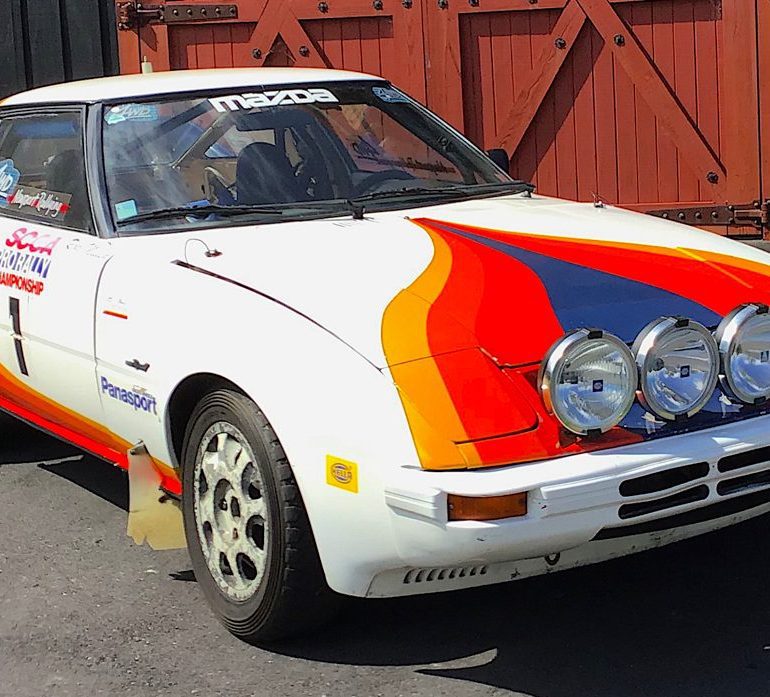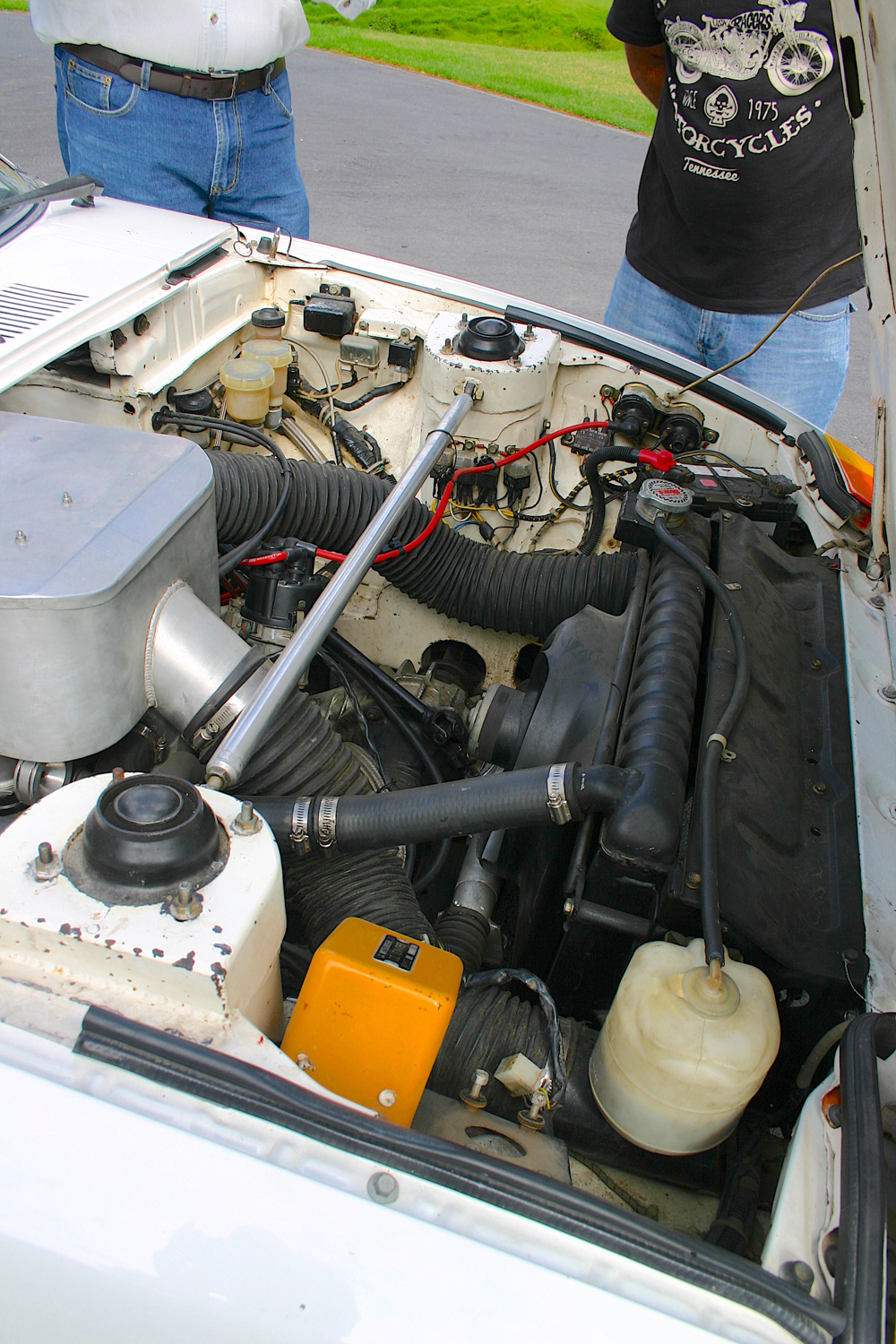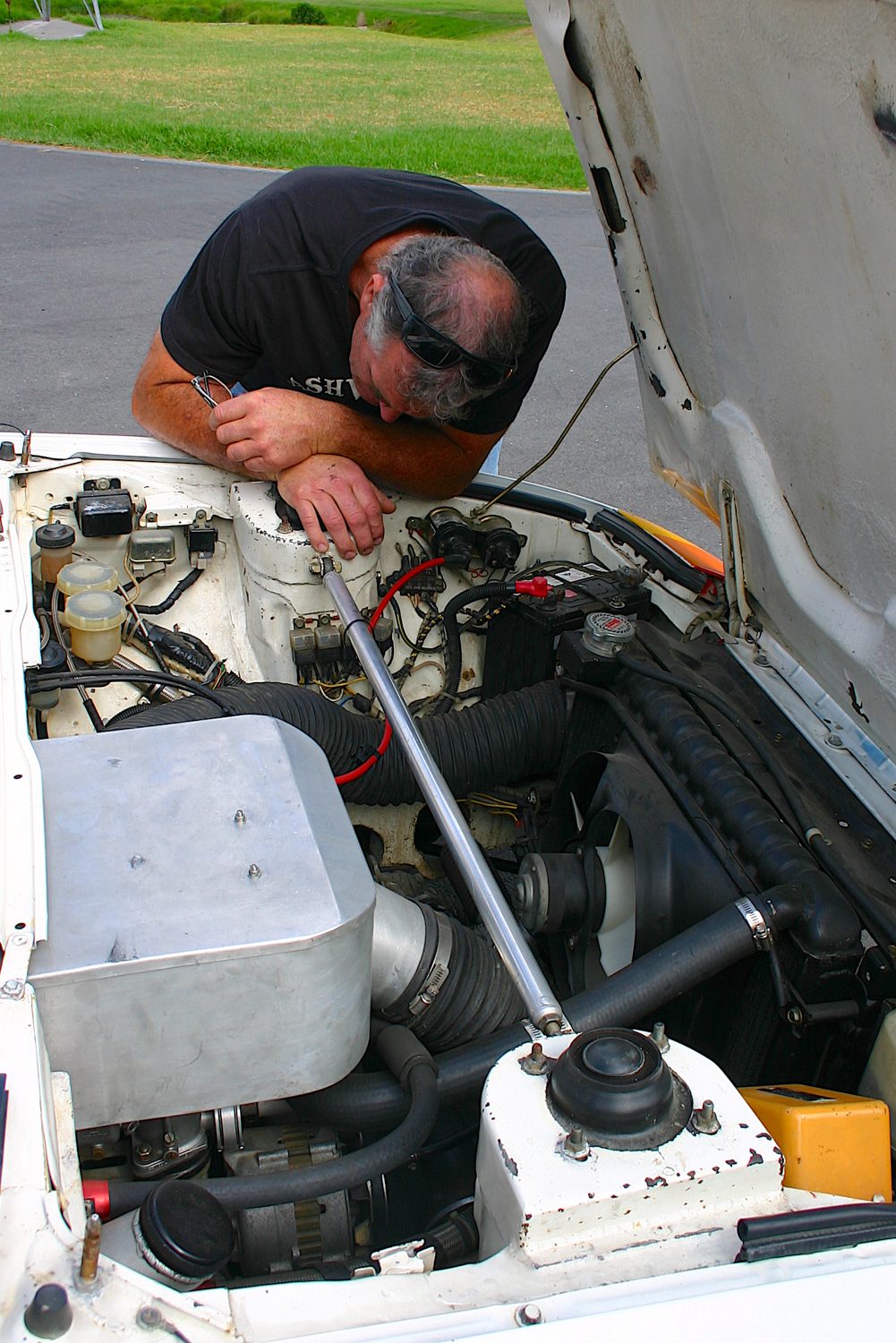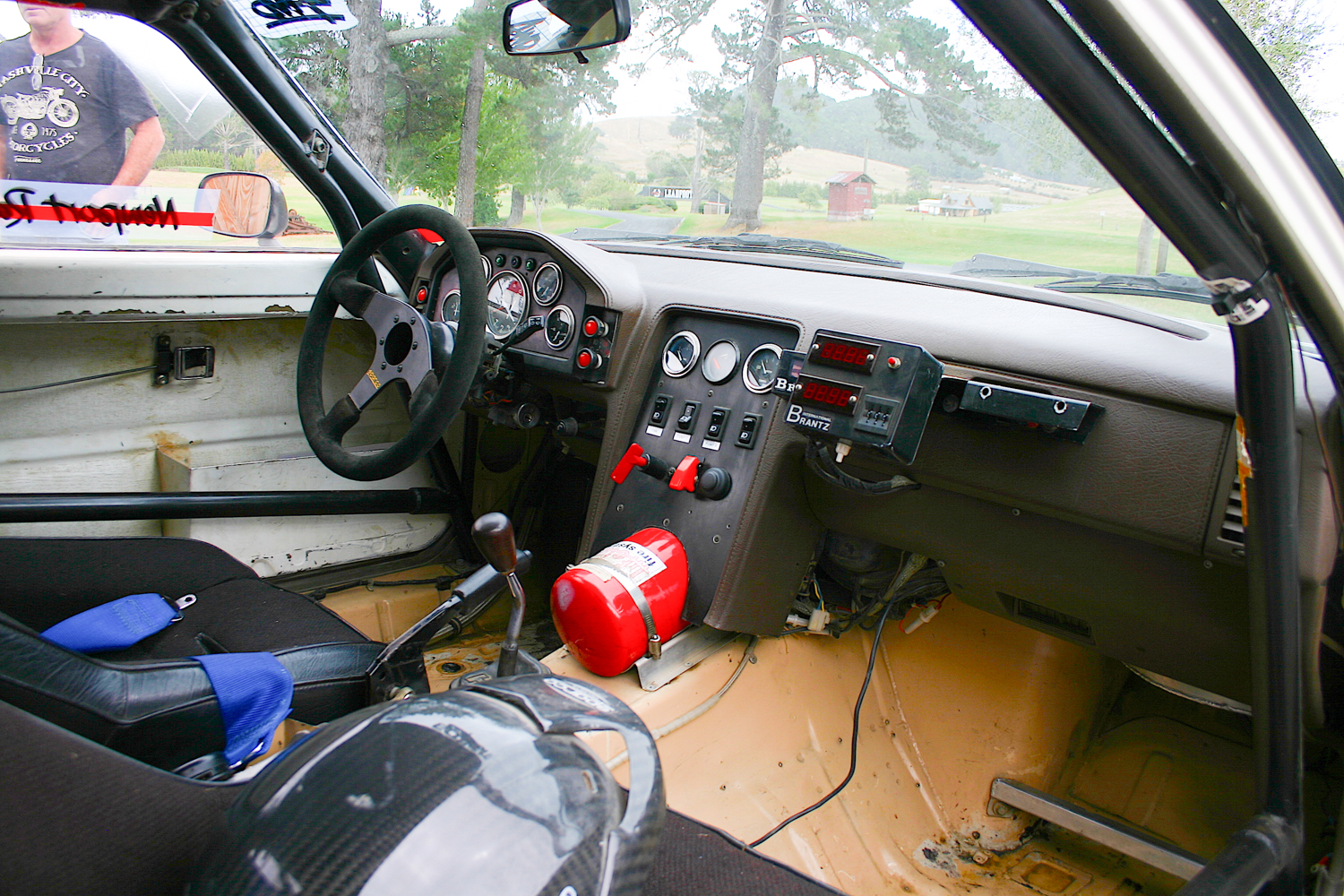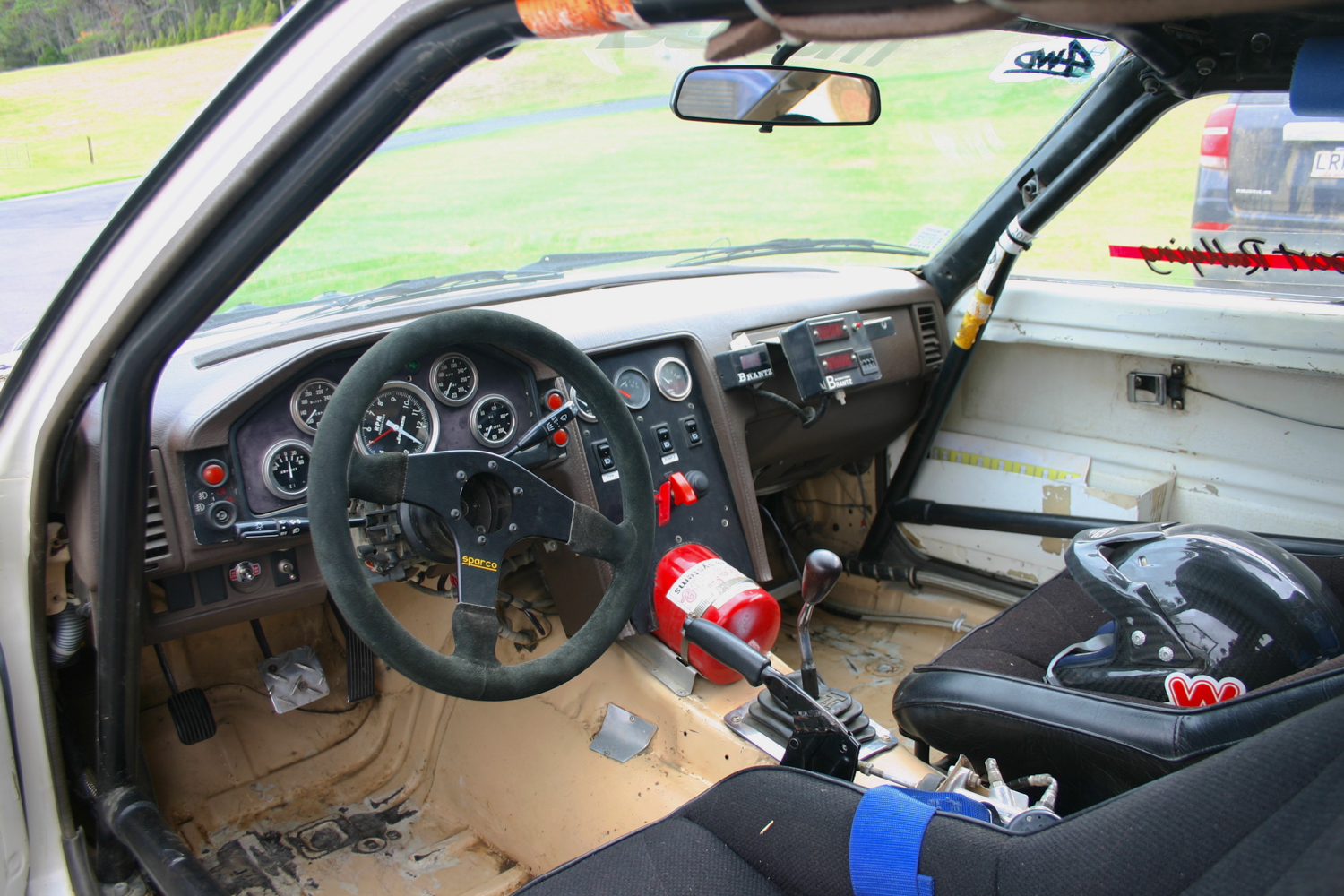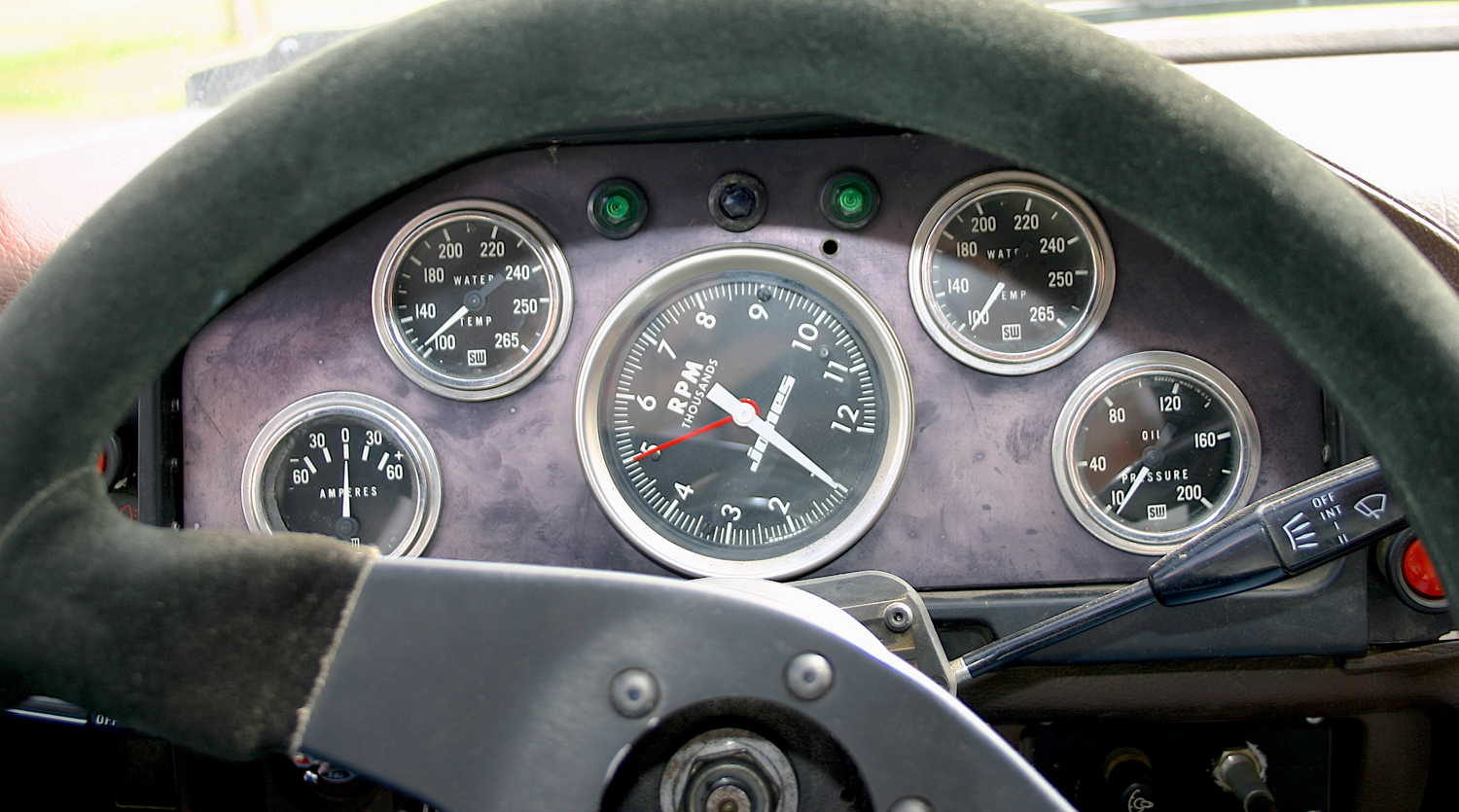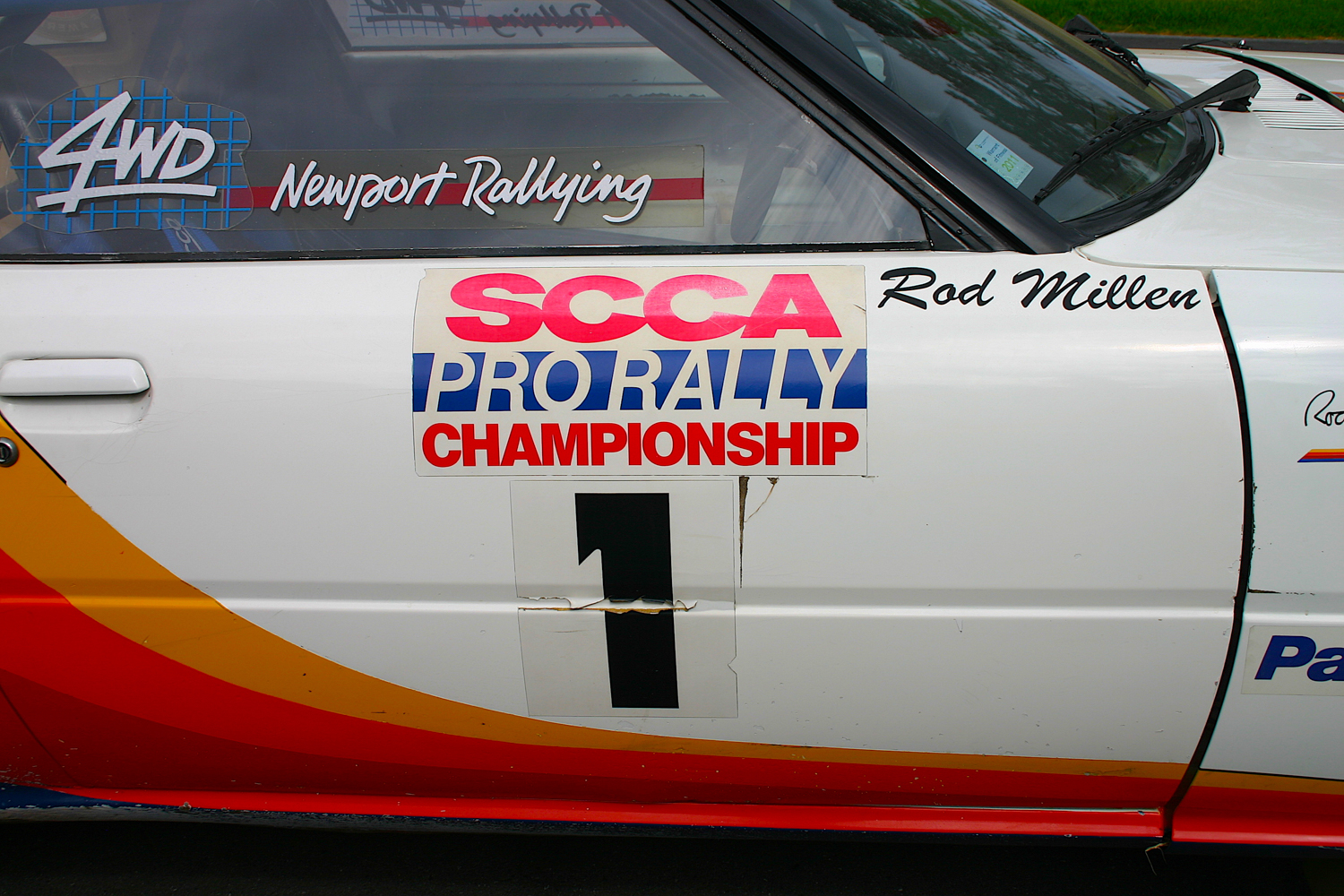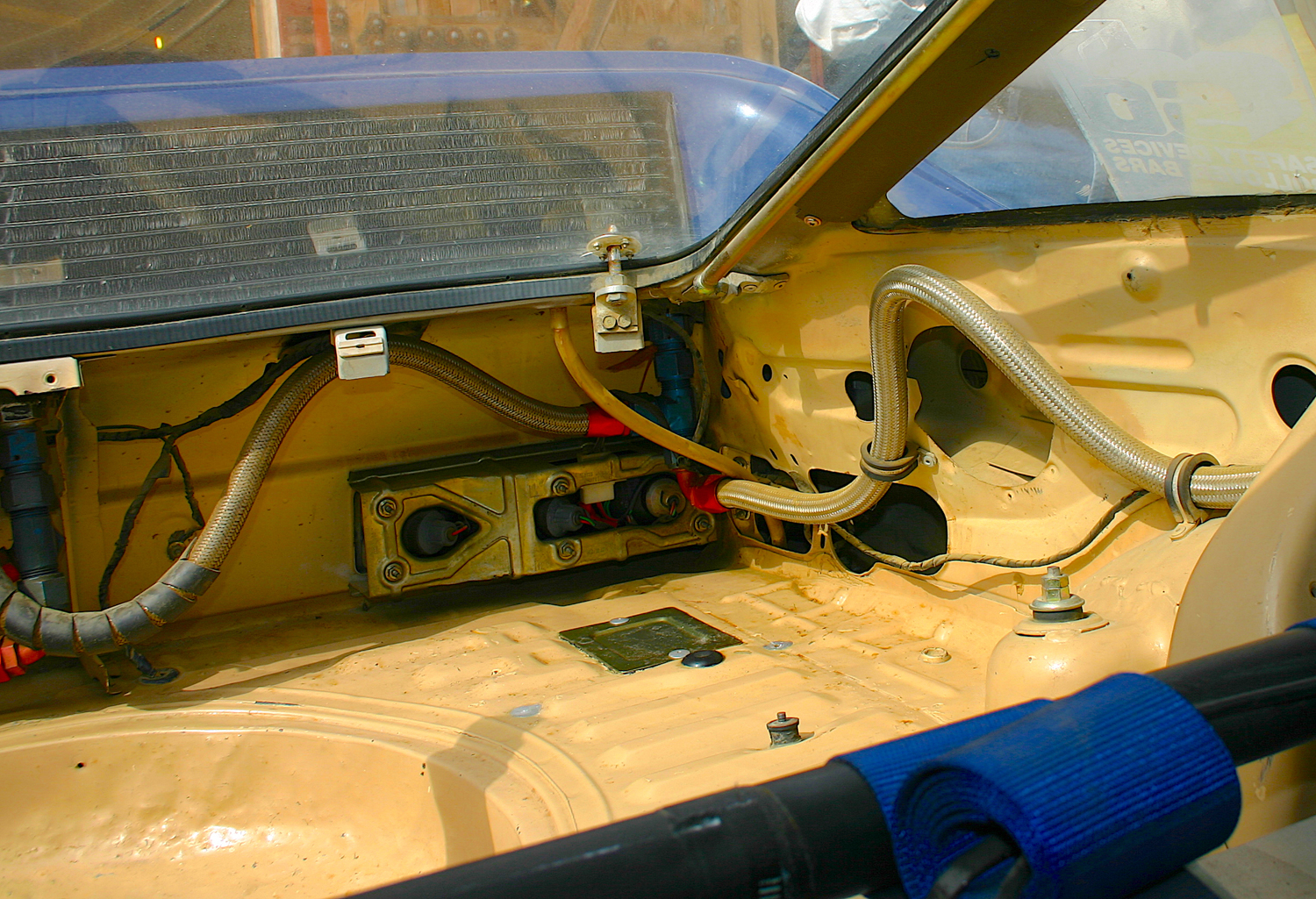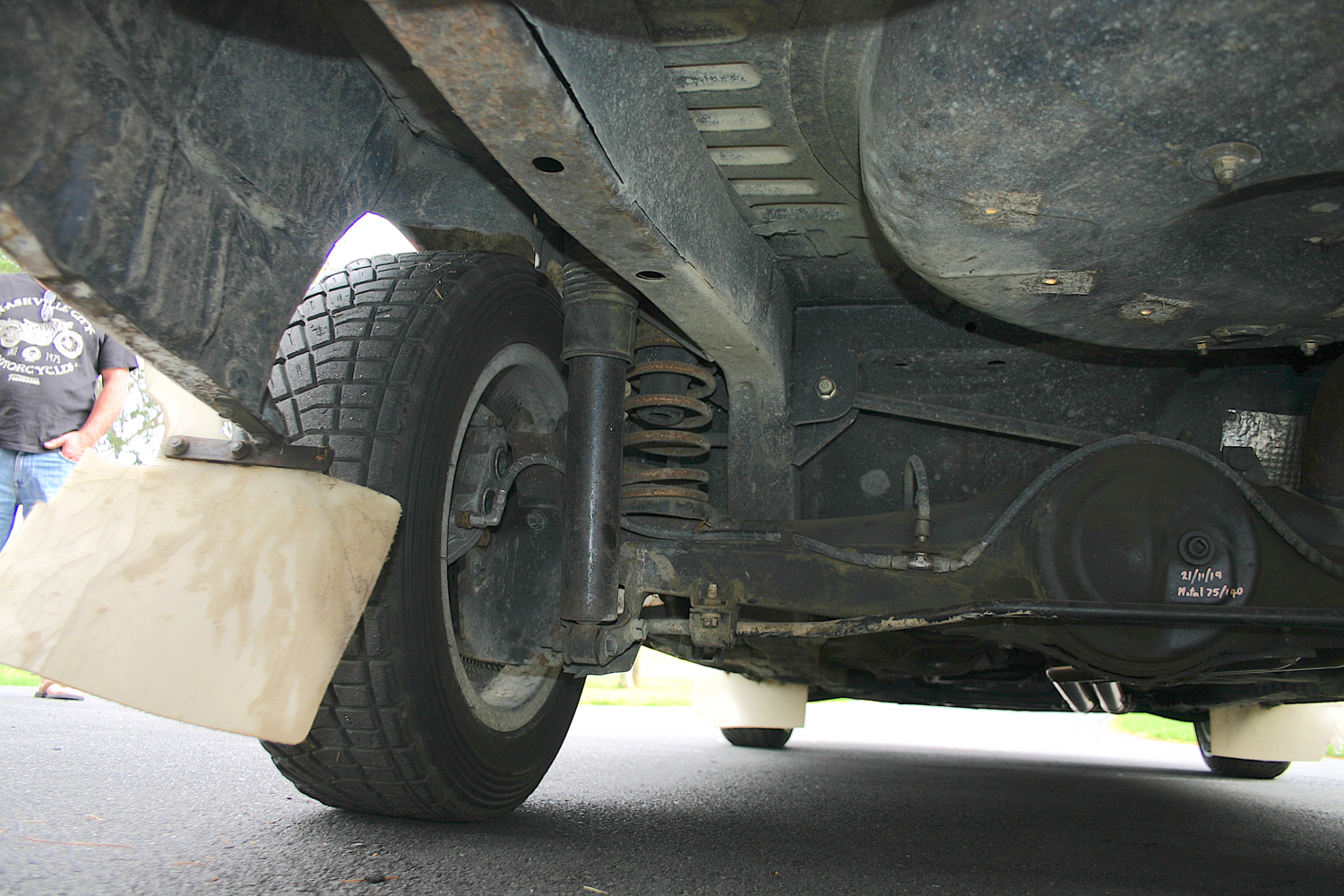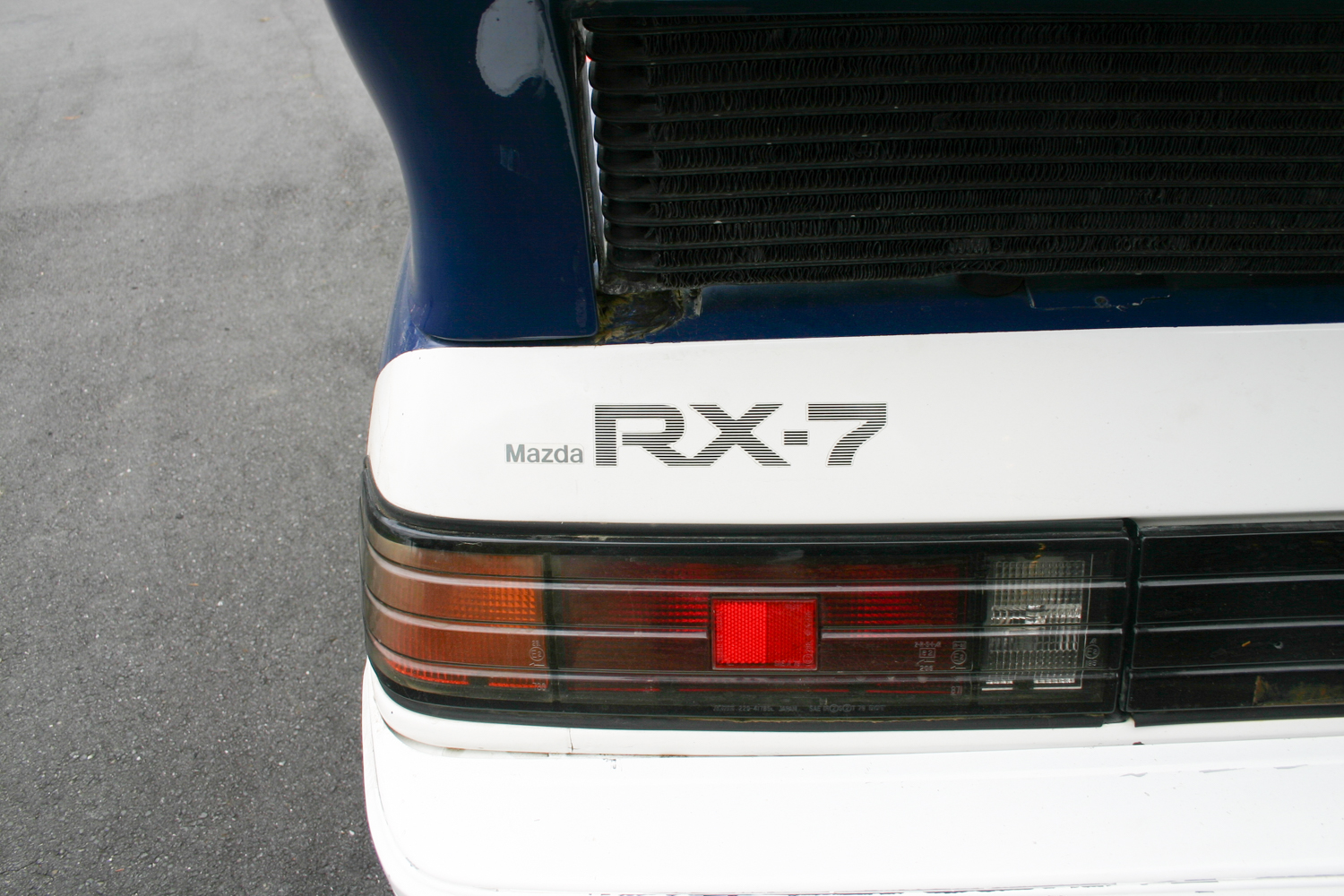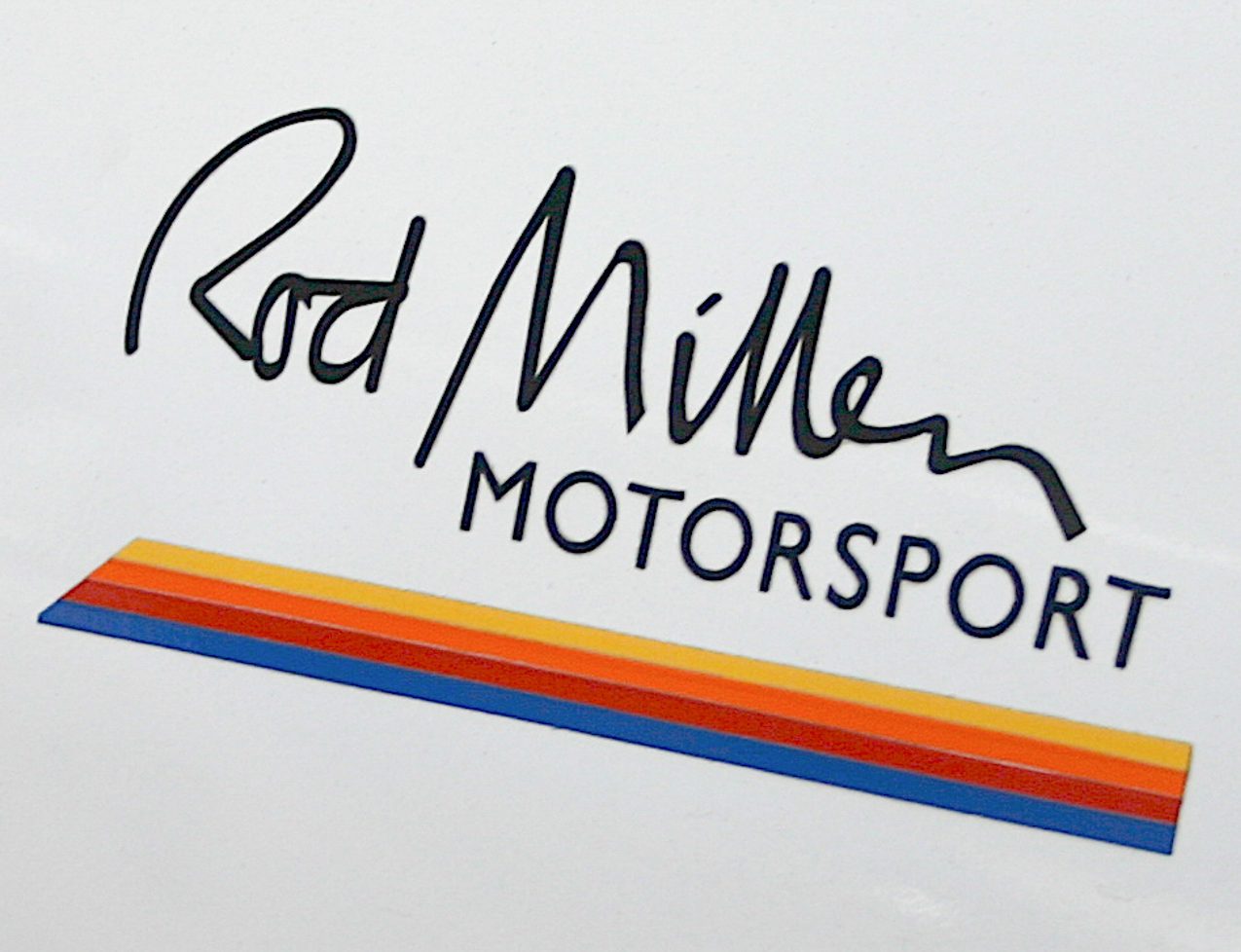
I climb over the side bar of the roll cage and settle into the seat, which is comfortable and form fitting. In fact, Millen says, “That car is like a comfortable old shoe to me.” The custom built dash is all business, with big, easy-to-read, no nonsense Stewart Warner gauges. The tachometer is turned in such a way that Rod can easily see it to keep the engine in its optimum rpm range.
Taking the wheel of Rod Millen’s championship RX7 is a bit like picking up Eric Clapton’s guitar. Yes, I can pick it up, and even strum a few cords, but play it like Clapton?—not a chance. Likewise, I can sort of drive Rod Millen’s rally car, but . . . you get the picture.
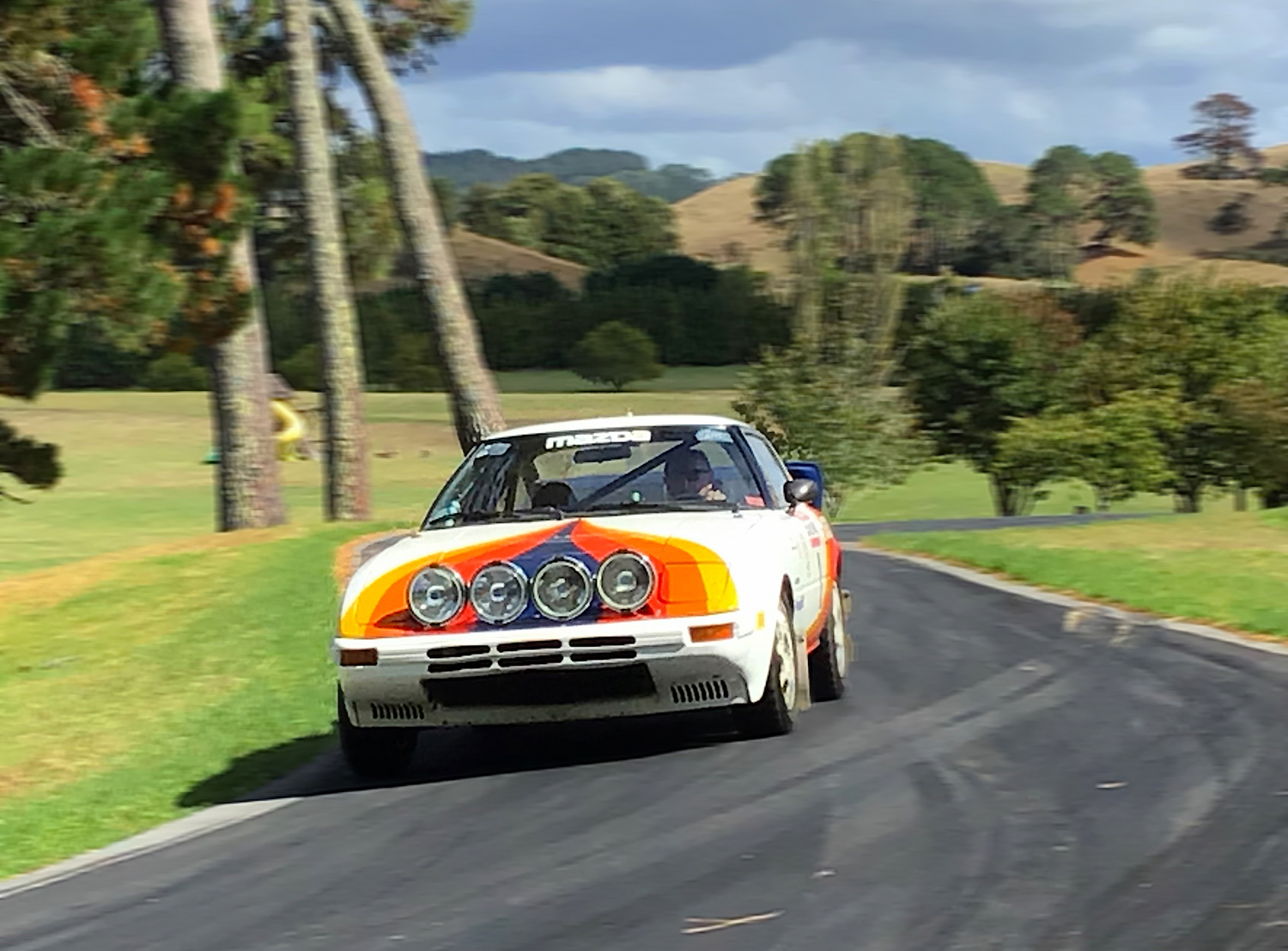
The transmission is a full synchromesh five-speed so shifting is easy, if a little imprecise. The clutch is firm but easy to depress. As it warms, the engine settles into that peculiar rump-rump-rump sound that is typical of rotary engines.
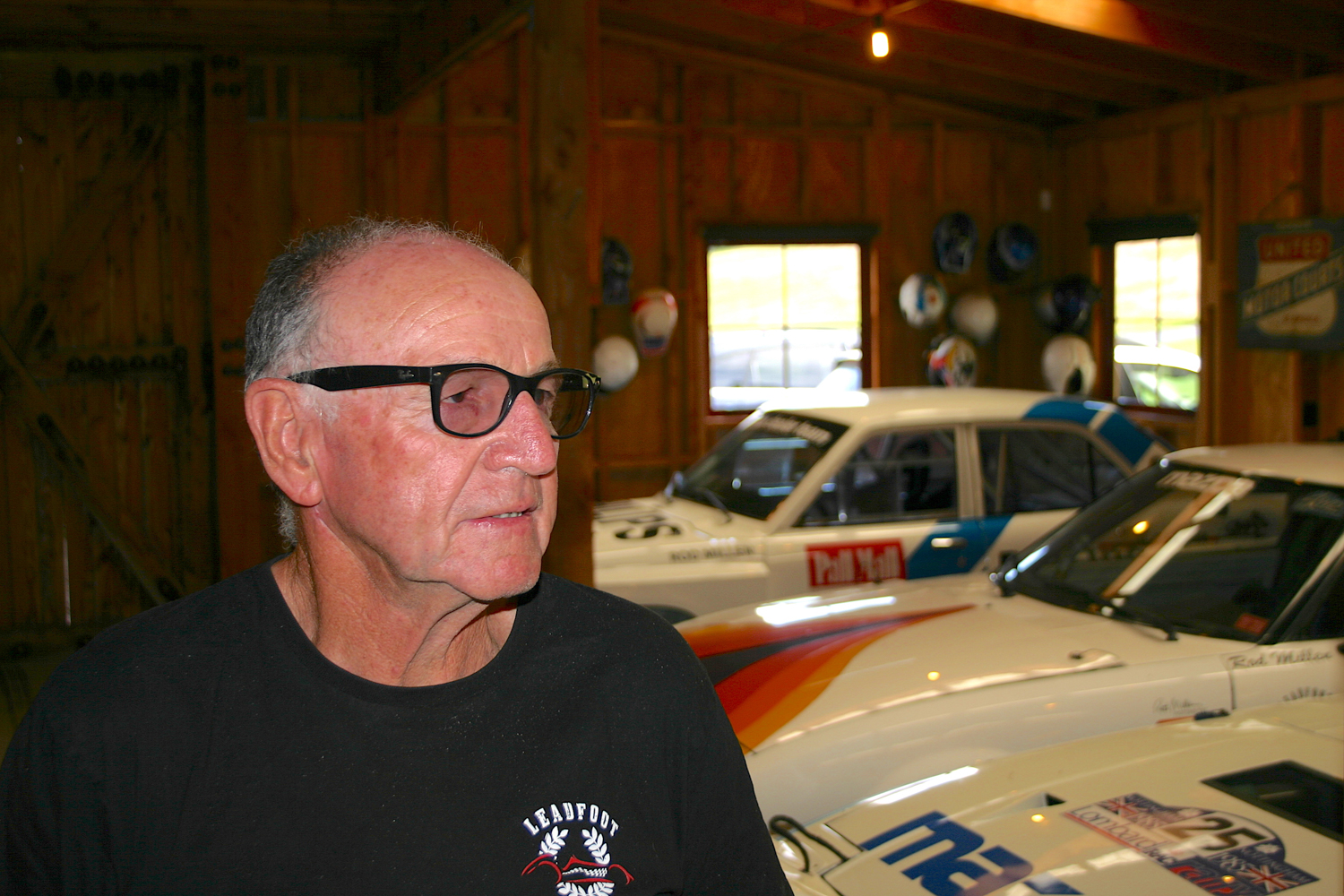
Rod’s RX7 is equipped with four-wheel drive and the overall gearing is quite low, but it is designed to yield a maximum speed of 104 miles per hour. Millen points out that from the start line, you need to take off in two-wheel drive in order to preserve the front wheel drive train, and then shift into four-wheel drive once you’re rolling. The engine revs instantly at the blip of the throttle, up to the start of its optimum rpm range at about 10,400 rpm, but effortlessly screams its defiance at 16,000 rpm plus.
In fact, Millen says that when racing you don’t want the engine to drop below 6,500 pm, and that it doesn’t make much power below 10,400 rpm. Rotary engines also run optimally on 98 octane pump gas thanks to the engine’s unique design, and there is no practical way to go beyond about 9:1 compression.
The rotary, or Wankel engine concept, was not new when Felix Wankel first put together a working model for German automaker NSU in 1954, and then developed prototypes for testing in 1957. After that, in 1961, Japanese automaker Mazda teamed up with NSU to develop the Wankel rotary engine for production. It then debuted in Japanese production cars in the nineteen sixties.
Rotary engines have the advantage of being simple, light and compact, yet able to produce prodigious power. There is no cam, and there are no pushrods, rocker arms or valves to complicate things, and there are no pistons and connecting rods with their characteristic monkey motion to convert up and down effort into rotary motion. This makes them nearly ideal for performance purposes.
There is little more to a rotary than an oval shaped crankcase containing a large, eccentrically mounted, spinning delta with an intake on one side of the crankcase, and an exhaust outlet on the other. In this respect the rotary, or Wankel engine is like a two-stroke motor. Also, the Mazda motors are designed so that lubricating oil is injected into the fuel at a ratio of 100 to one. Rod tells us for racing purposes he uses pre-mixed fuel rather than depending on oil injection because lubrication is critical to engine life.
Not only does the engine need oil mixed with the gasoline, but on Millen’s RX7 there are big oil coolers mounted just below the rear wing to cool the lubricating oil as well. They are actually bigger than the radiator because the engine is partially oil cooled.
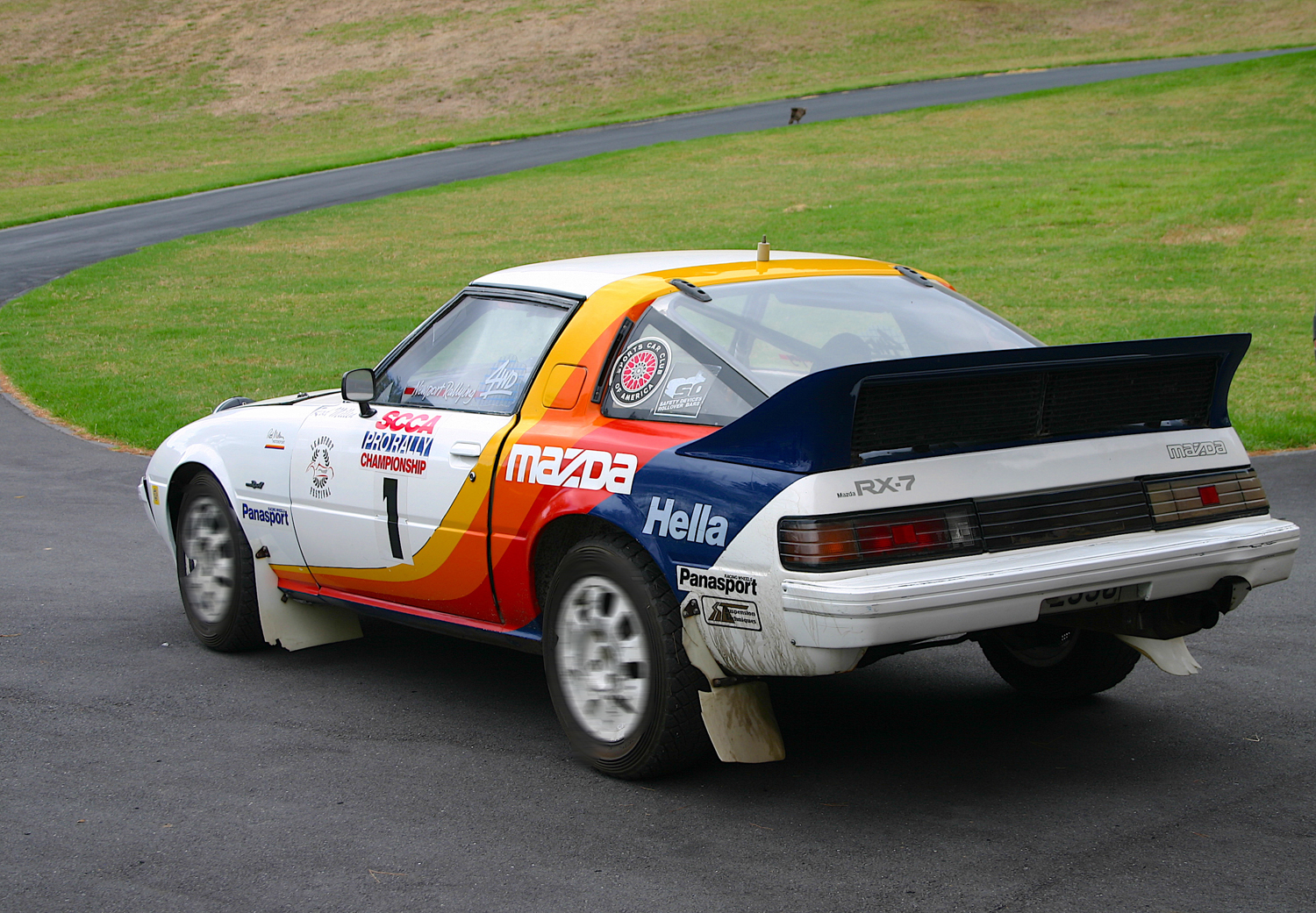
So, why doesn’t everybody use rotary engines, and why did Mazda quit producing them in 2012? Actually, there are a couple of reasons. The first is that rotary engines have a low thermal efficiency, as a result of the long combustion chambers inherent in the design, which causes more unburned fuel to go into the exhaust.
If you have ever seen Mazda-powered cars strut their stuff at races, you will likely notice spurts of flame coming out of the exhaust. That’s okay for racing, but for passenger car use it results in more air pollution, much like two-cycle engines.
Another problem is that rotary engines don’t last as long as reciprocating engines because the intake side of the motor is relatively cool, while the combustion side is hot, causing uneven expansion of the block, which in turn causes the apex seals to fail. The result is that rotary engines typically need rebuilding at 80,000 to 100,000 miles. That doesn’t compare favorably with other modern cars that can easily go over 200,000 miles before needing an overhaul. But that problem is comparatively unimportant for racers who want the most bang for their buck.
Rod says that in normal street use, the two ignition coils fire five degrees apart, but for racing they are set up to fire at the same time in order to get the hottest possible spark. Each rotor has two sparkplugs so as to get a complete, even burn across the long combustion chamber, but at the rpms at which Millen races, a hotter spark is more important.
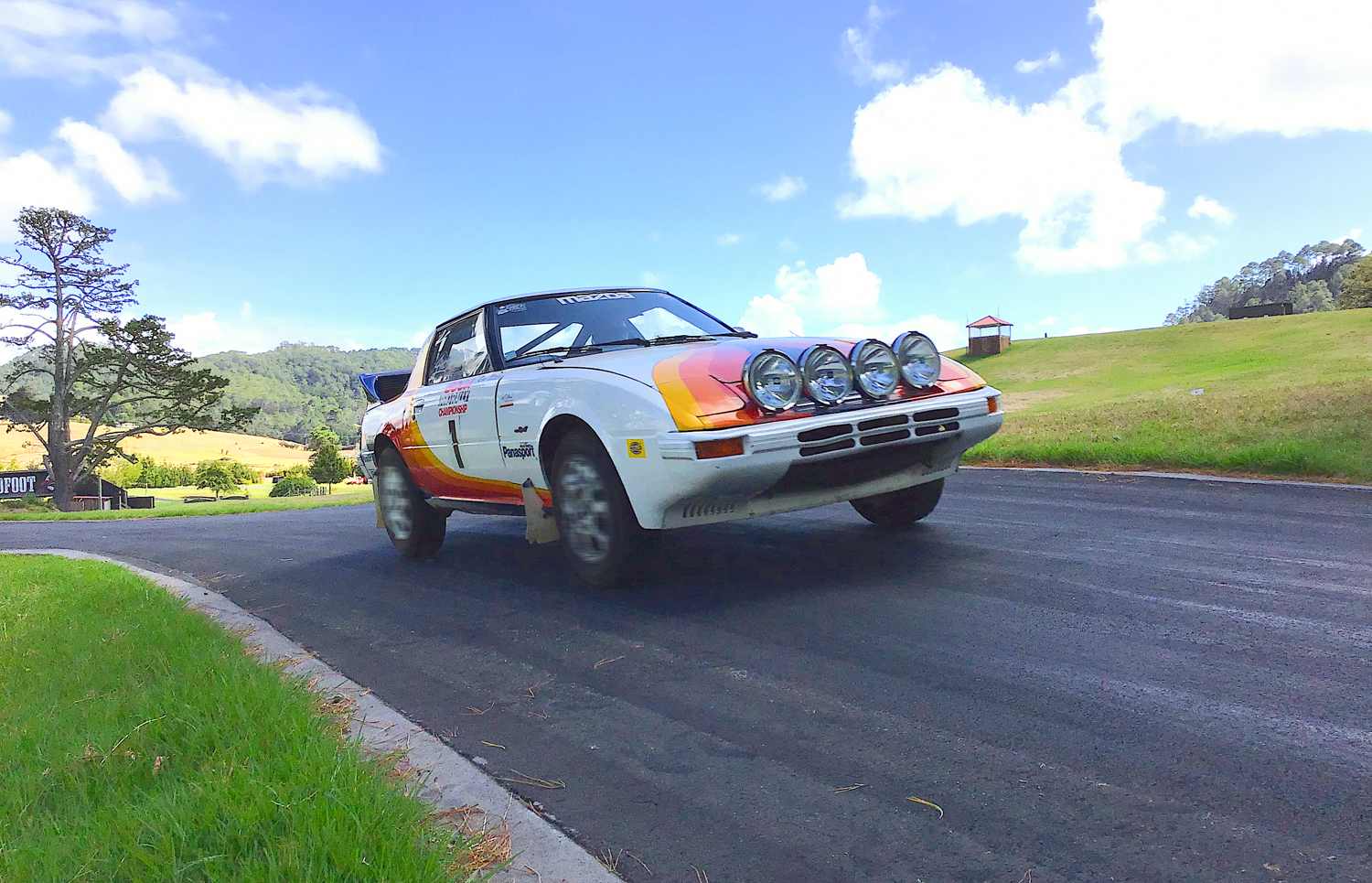
The steering in Rod’s RX7 is light, precise and sensitive, as a racecar should be, and cornering is flat and sure, even when pushed to the limit. Of course this is only an assumption on my part because I am a long way from being capable of pushing Millen’s championship rally car to its limit. However, in his hands, the car can make it up his mile long, twisty, hilly driveway in under a minute!
At the Leadfoot Festival, watching Rod Millen negotiate his driveway at speed is like watching high-speed ballet. He does it with perfect grace, as if it were all choreographed. He almost makes it look like a Sunday drive, with no funny missteps or mistakes, and at blinding speed.
Acceleration in his 1985 RX7 requires you to brace your neck in order to hold your head up to see where you are going, and cornering only involves relatively quick minor input to the wheel. And at speed you bounce around and are treated roughly by the car. In fact, you would get battered and bruised if the seat were not form fitting with the five-point restraint harness securing you tightly in the car.
Millen’s RX7 handles superbly thanks to the huge amount of engineering effort that went into making it nimble and light in order to beat the new four-wheel drive Audi Quattros of the time. As Millen says in his book, “The Cutting Edge”: “The 1980s saw a kind of arms race in the world rally scene, as everyone scrambled to match the monster – the Audi Quattro – and Audi strove to stay ahead of the pack.”
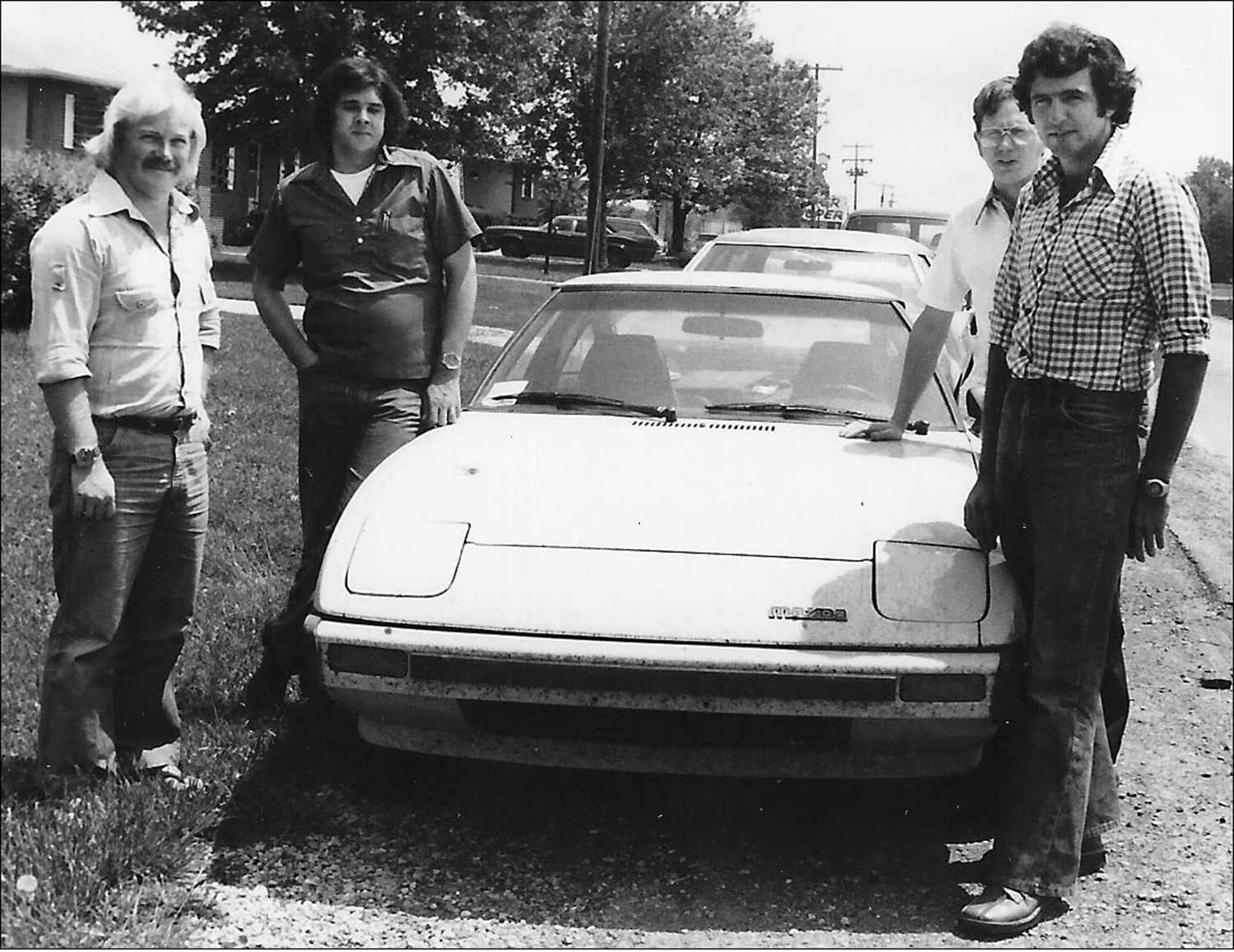
The story of this car began in 1983 when Mazda ask him what he required for the coming year. He then explained to them that they would need four-wheel drive to run with the Quattros. However, they didn’t have anything suitable at the time and asked him for ideas. Millen stated that: “It seemed to me that the front-wheel drive front end of the 626 could somehow be mated to the rear wheel drive of the RX7.” So he could build his rally winning 1983 RX7, Mazda sent him a front-wheel-drive 626 chassis and an RX7 body shell.
To make a functional four-wheel drive car out of this Millen consulted Peter Weisman at Traction Products in Costa Mesa, California. They specialize in transmission and drive train design, and designed and built the transmissions for Jack Brabham’s Formula I cars.
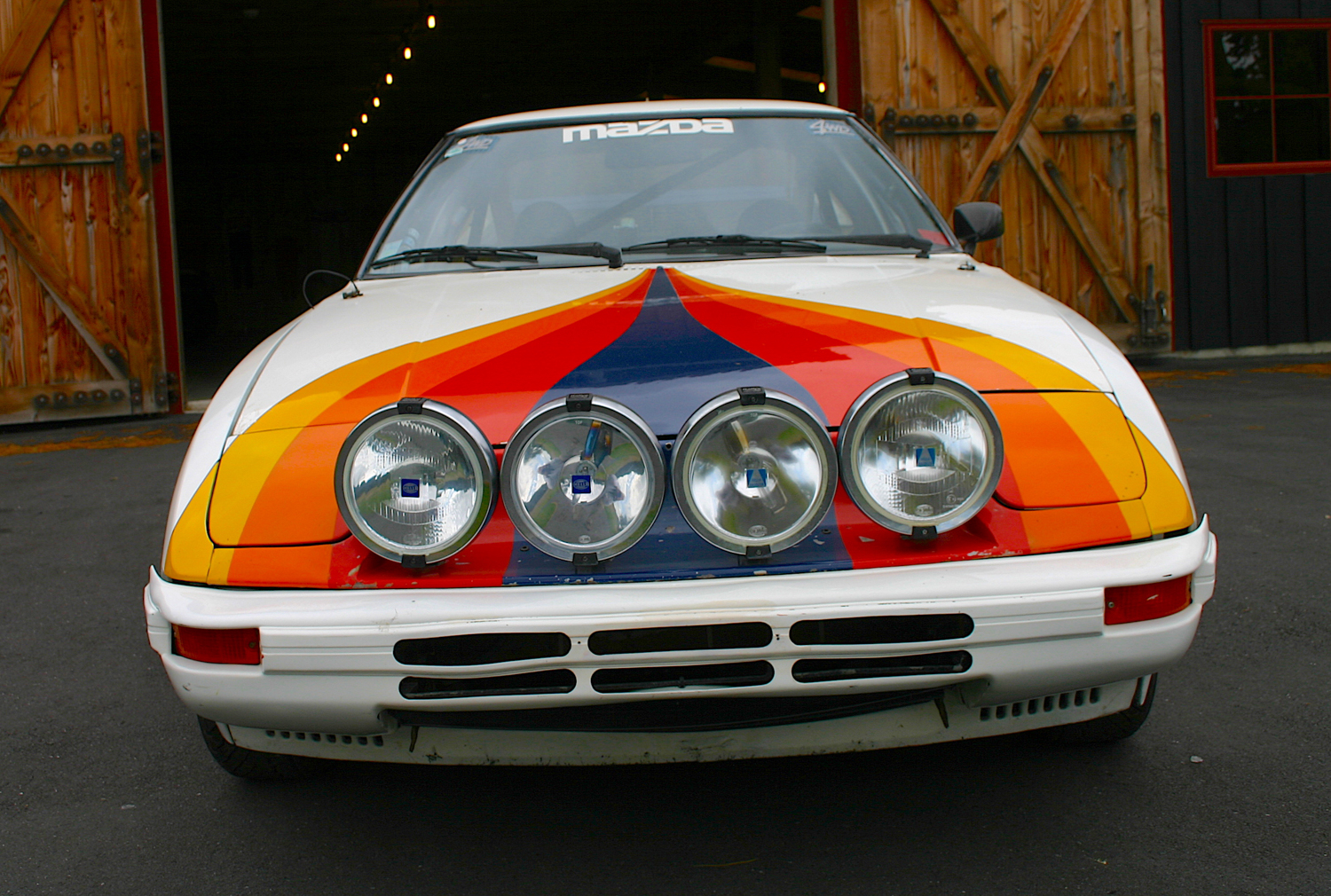
Weisman came up with the drive system to connect the 626 front-wheel drive to the rotary engine, and in order to get the gearing they wanted and to narrow the rear axle they went to an Alfa Romeo rear end. The engine was moved back under the firewall in order to get the weight balance as close to 50/50 as possible, and the driveline was engineered to provide a 50/50 torque split front-to-rear for handling and control.
Our feature car was built for the U.S. Rally Championship, again with the main focus being to beat the dominant Audi factory team in 1985. It won the Manufacturers Title that year as well. It was the third in the series of four-wheel drive cars built at Rod Millen Motorsport, and as a result they were able to apply lessons learned from two previous efforts.
Its engine makes 300 horsepower, and it is equipped with a five-speed transmission and low (high numerically) 5.375 final drive. This third car is lighter, better balanced, and geared lower than the previous two examples. It weighs 2,138 pounds and has a top speed of 118 mph. The focus at the time was to make a car with faster acceleration for the typically twisty and tight roads of the USA rally series.
Rod Millen’s record of wins and championships could, and does, fill a book and is too compendious to offer in its entirety, but in the United States he is perhaps best known for taking Pike’s Peak away from the Unser dynasty by winning it for six years running and setting several records. To be clear, that is a 10,000-foot ascent in 10 minutes on a death-defying dirt road on which it is one false move and you’re dead. He was never quite able to best his ten-minute time, though that was his goal.
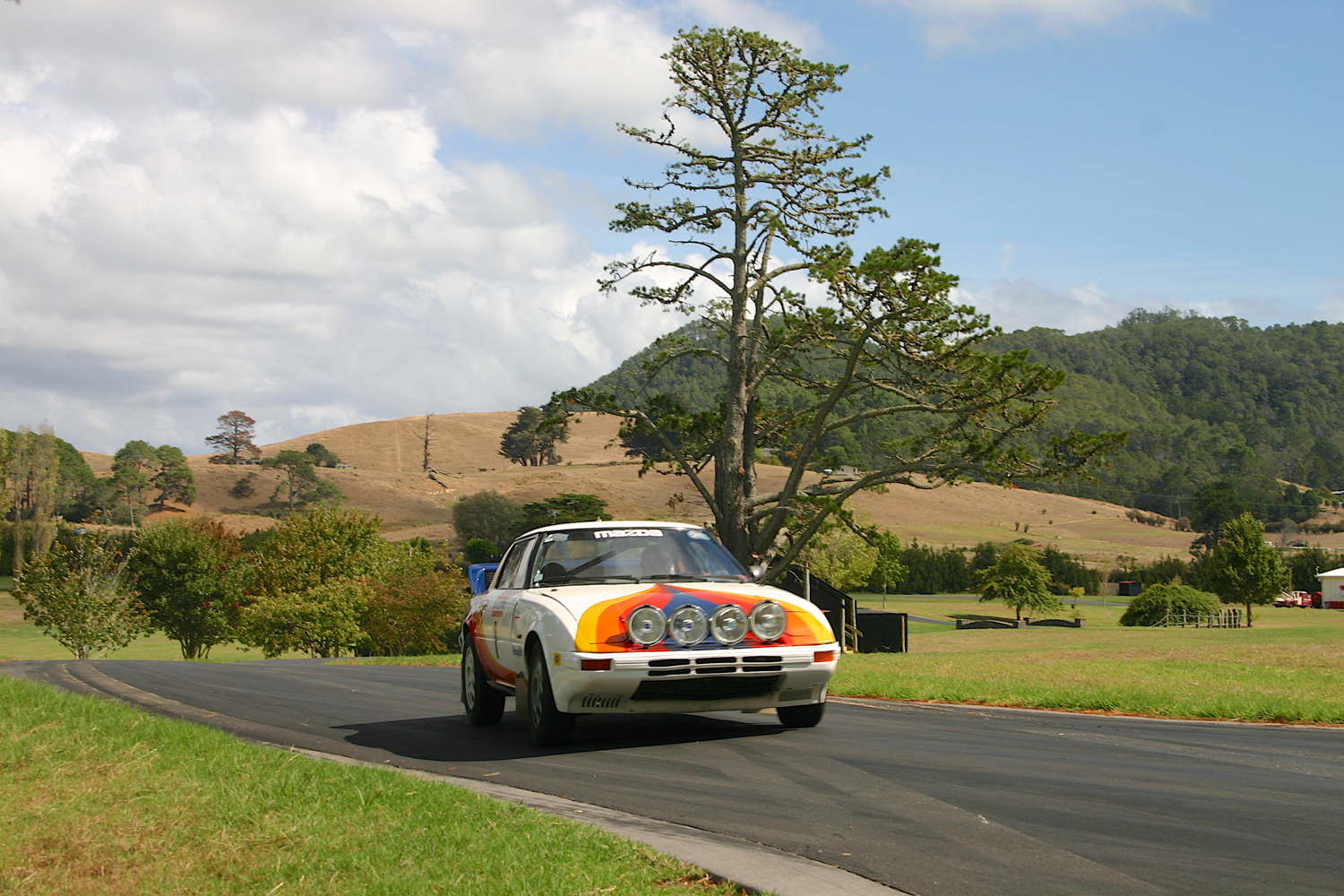
Pike’s Peak is paved now, so his record has been broken, but Millen is still known as King Of The Mountain. Rod and his sons have also covered themselves in glory on the Baja 1000; another death defying, dust eating, grueling run in a brutally hot, hostile desert where spectators have been known to throw obstacles on the route just to see if the drivers can handle them.
Millen started as a kid goofing around with an ancient 1929 Plymouth with his brother Steve on the farm. One thing led to another after that, and he later began racing in the New Zealand Rally Championship. He became season champion in 1975, 1976, and 1977 driving Mazda RX3s.
And then he decided to try his luck in rally races in the United States in 1978 with Mazda Rotary-powered RX7 entries.
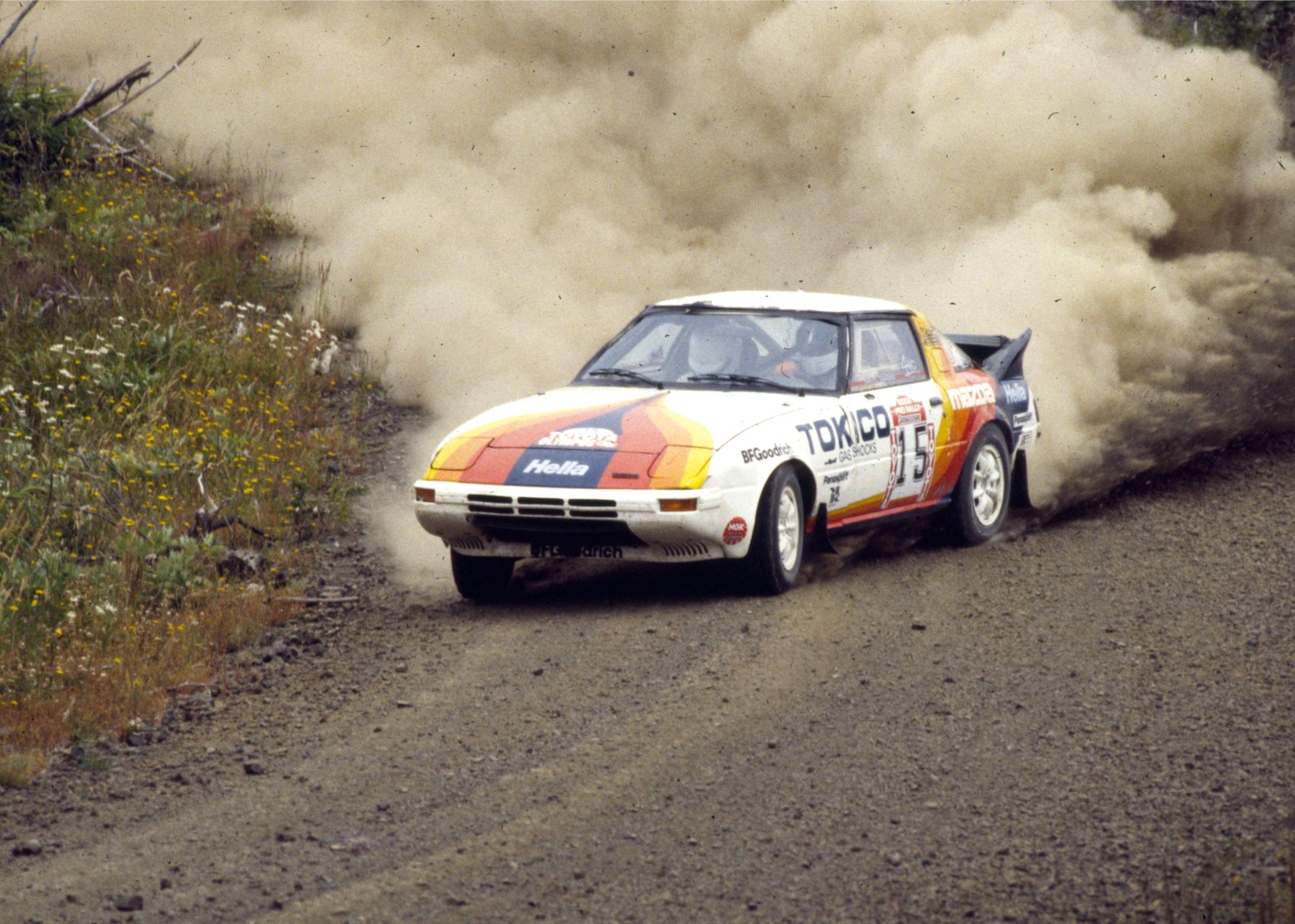
From there he went on to win the North American Race and Rally Championship in 1979. And then he became champion again in 1980. In 1981 he won the SCCA Pro Rally, and earned his second series championship in 1985. After that he won back-to-back SCCA National Rally Championships in 1987 and 1988.
Click here for a Photo Gallery from the 1985 Olympus Rally
And then while winning his third straight SCCA National Rally Championship in 1989, he also won the Asia-Pacific Rally Championship. Also, in 1989, he raced against his brother in the 24 Hours of Daytona and took the GTU division along with co-drivers Al Bacon and Bob Reed.
Millen’s mile-long driveway at his Leadfoot Ranch, in Hahai, on the Coromandel Peninsula of New Zealand where we met with him for this report is the perfect place for a rally car to strut its stuff. His home overlooks spectacular ocean cliffs, with surf crashing below, and is reminiscent of a medieval castle with a huge living room that has a vaulted ceiling, and a fireplace so big that he has a small cart on rails from a mine originally to supply it with wood from his shed outdoors.
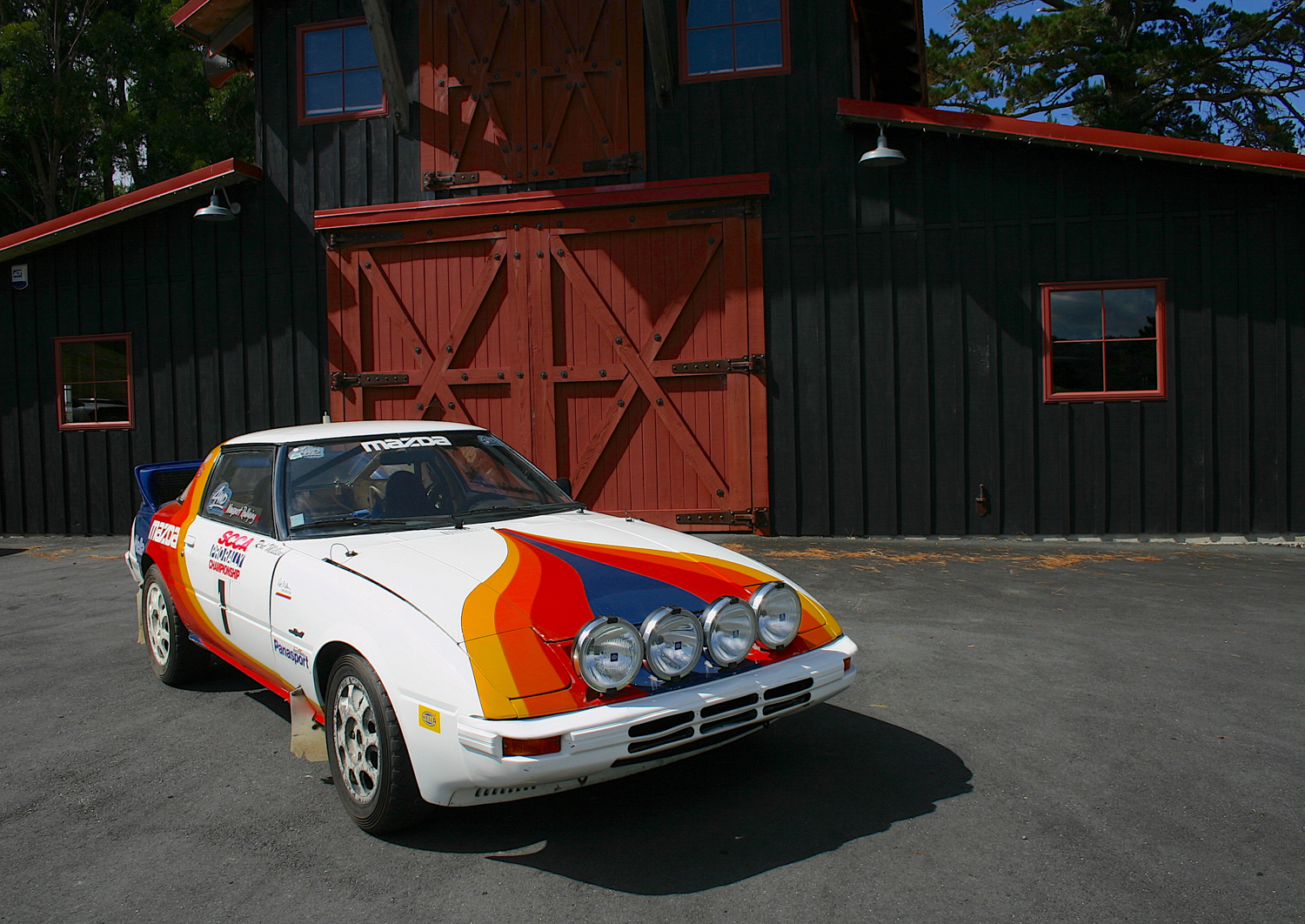
When he retired from his racing career and his automotive engineering and concept firm, Rod Millen Engineering, in Huntington Beach, California, he purposely constructed his mile-long driveway over the hills and through the woods to replicate the famous driveway at the Goodwood Festival of Speed where he competed six times, taking the fastest time in 2007.
When Rod’s “driveway” was completed, his wife Shelly invited his fellow racers and assorted ‘Petrol heads’ from around New Zealand to test their mettle on it to celebrate his 60th birthday. That was ten years ago, and since then these get-togethers have evolved into an annual three-day event called the Leadfoot Festival, which attracts famous cars and drivers as well as spectators, from all over the world.
Scott Dixon, five-time Indy Car Champion, and two time Indy 500 winner Little Al Unser have shown up for the event, and Dixon drove Millen’s 1906 Vanderbilt cup winning Darracq up the driveway several times. He stated that the Darracq was much more difficult to drive than a modern Indy car. Little Al drove a 1914 Stutz in the event more recently and was smiling all the way.
Ernie Nagamatsu a retired dentist from the Los Angeles area, who owns the legendary Ol’ Yeller, has shown up at the Leadfoot too, and thrilled spectators with the sounds of a big all-American V8 as he slipped and slid up Millen’s “driveway.”
Old Yeller by the way, was a pioneering sport car racer cobbled together back in 1959 by Max Balchowsky at Hollywood Motors using a Buick nail head engine, a lumpy but aerodynamic home built body, and old checked white sidewall tires from a salvage yard. It was crude to say the least, but it struck terror in the hearts of the legendary Ferraris and Jaguars back in its day.
We took pictures and made several passes up and down Rod’s driveway to get some good driving shots, and then pushed the classic racer back into Millen’s barn, which houses a collection of his race winning cars from his championship days. They are mementos of a glorious career that spanned 30-plus years, and took him all over the world, but most importantly to America, where his company, Rod Millen Motorsports, was a major success, building prototype and concept cars for many major manufacturers, as well as the U.S. Military.
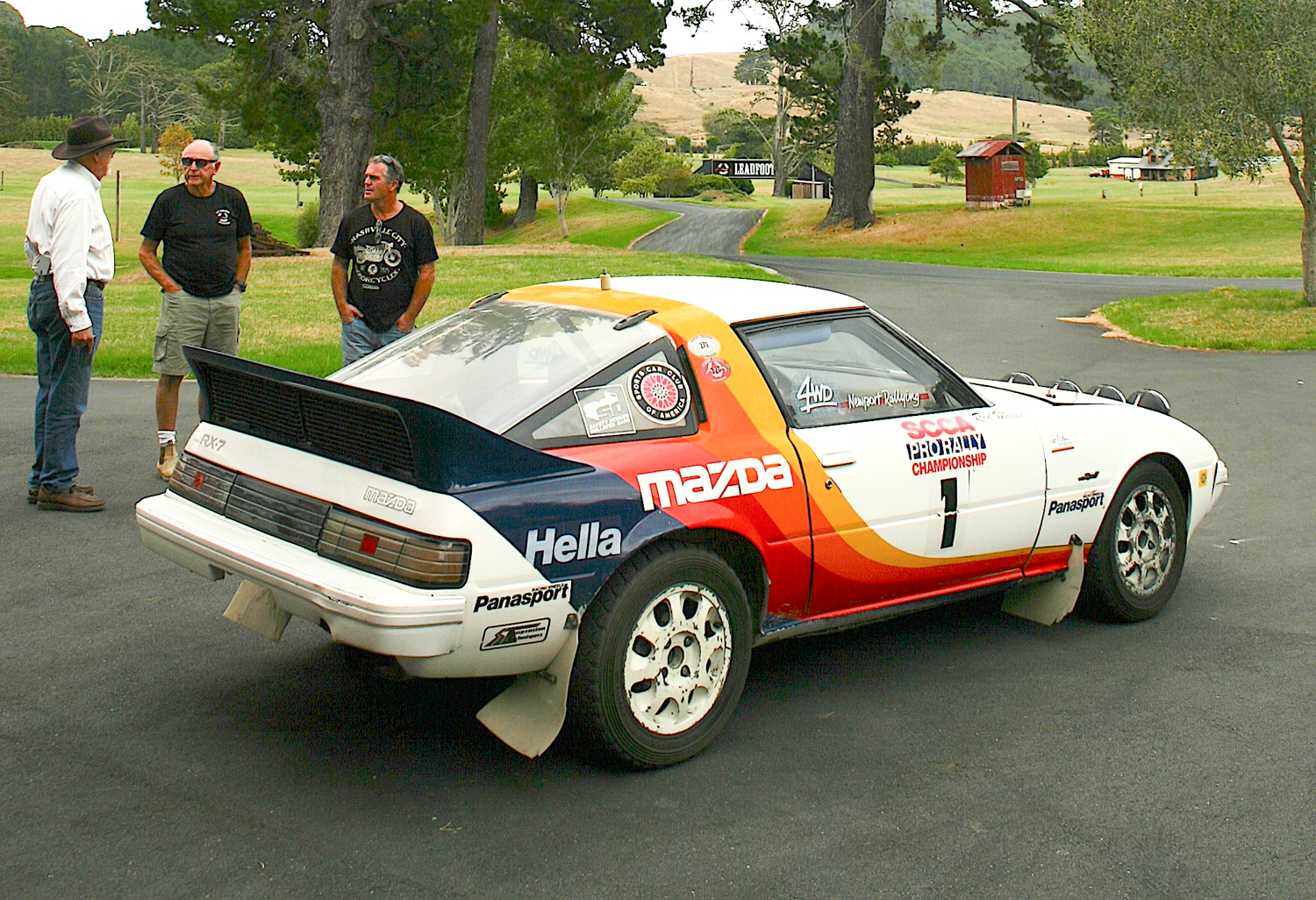
On his New Zealand property he also has a vintage American gas station that would look right at home in Kansas. It is complete with an office and a fully stocked lube room. Alongside it is a 1940s era American LaFrance fire truck, and outside the barn housing Millen’s championship winning car collection is an all original 1937 Chevrolet pickup in good original condition.
After ogling Rod’s collection and his beautiful estate, we adjourned to his underground wine cave for a final treat before leaving this wonderland of his own creation and heading back to my place, not quite believing that we were really in the company of a world champion rally driver and car builder.
The next Leadfoot Festival will take place at Millen’s Leadfoot Ranch on the Coromandel Peninsula, which is about two hours out of Auckland next February 5–7. It will feature racecars from all over the world and from all eras, along with well known drivers testing their prowess on Rod’s “driveway.” Remember too, that New Zealand’s summer is during our winter. If you are interested in attending, contact them at www.leadfootfestival.com


